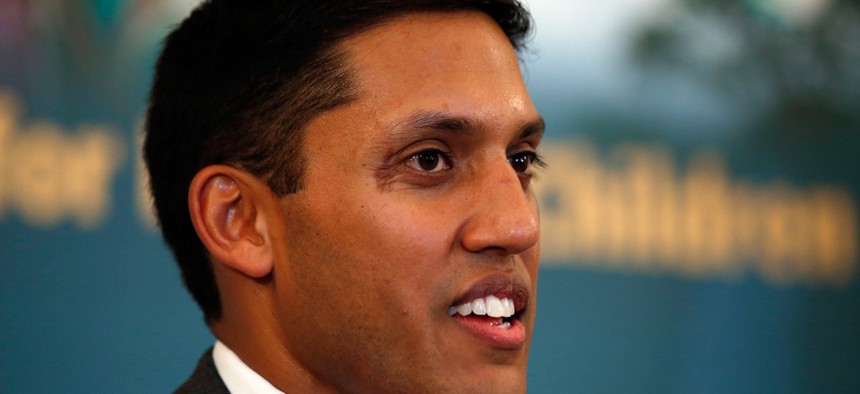How to Beat Bureaucracy and Change a Federal Agency
Rajiv Shah leaves an impressive legacy at the U.S. Agency for International Development.
You can’t turn around a federal bureaucracy--certainly not in the limited amount of time the typical political appointee is at the helm of an agency. Genuine innovation is difficult, if not impossible, in the public sector. There’s no way to manage a government organization and its programs to win support across the political spectrum.
If you believe any or all of these things, you won’t get much in the way of evidence for your position from Rajiv Shah, the outgoing head of the U.S. Agency for International Development.
Shah told his staff Wednesday that he’ll be stepping down in mid-February, presumably to pursue a political career or some other form of public service. He will leave behind a legacy of transforming his agency over five years by fundamentally changing the way it operates.
USAID’s traditional approach was to funnel billions of dollars in federal funds to large American contractors, who then distributed it overseas. Shah, who worked at the Bill and Melinda Gates Foundation before entering government (he served at the Agriculture Department early in the Obama administration before taking the helm at USAID) shifted the emphasis to directly funding local groups and tapping the resources of companies and nonprofits to tackle key global development issues.
For example, the agency leveraged more than $10 billion from 200 companies to support African agriculture through its Feed the Future Initiative.
Shah’s USAID also created the U.S. Global Development Lab to cultivate new approaches to solving development issues. Its Development Innovation Ventures Fund has invested millions of dollars in more than 100 ideas in 35 countries. The agency launched six “Grand Challenges for Development” to fund projects ranging from promoting clean energy to developing new protective suits for health care workers fighting Ebola.
Before Shah took the job at USAID, the agency’s approach to doling out assistance was widely viewed as outdated and ineffective. But that doesn’t mean it was easy to upend the status quo. Shah did so by relentlessly focusing on results and requiring evidence that ideas would work before fully funding them.
Along the way, he gained support from both Democrats and Republicans on Capitol Hill. At a tribute to Shah in Washington last week, Sen. Lindsey Graham, R-S-C., described him as “a smart coalition builder who has brought a long overdue, transparent and business-like approach to USAID.” Rep. Nita Lowey, D-N.Y., said his “tireless work and steadfast devotion to USAID's mission has benefited millions of people and communities throughout the world."
Shah’s efforts attracted remarkably little controversy. Earlier this year, he had a difficult time explaining why USAID was involved in a secret scheme to set up a Twitter-like service in Cuba. But that was about it in the way of scandal. In today’s oversight-intensive, presumption-of-incompetence environment, that’s an impressive feat in and of itself.




